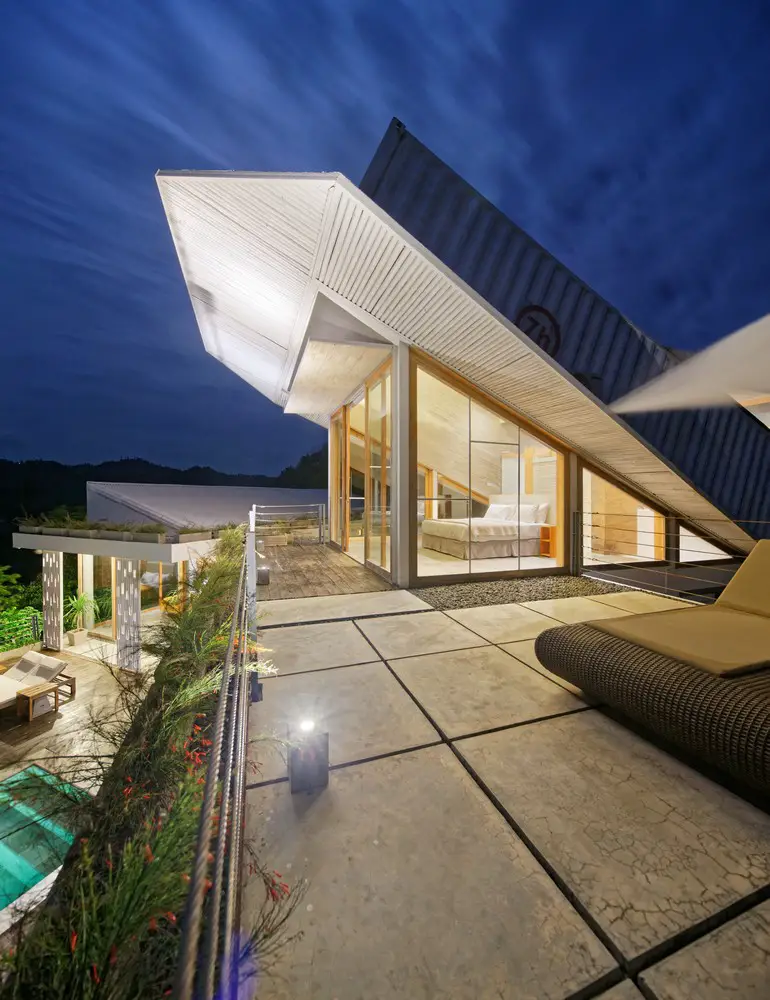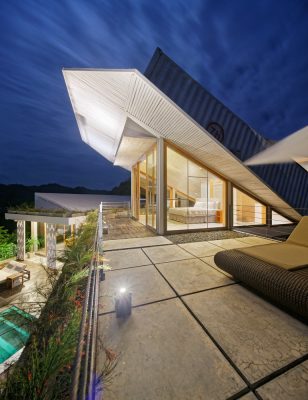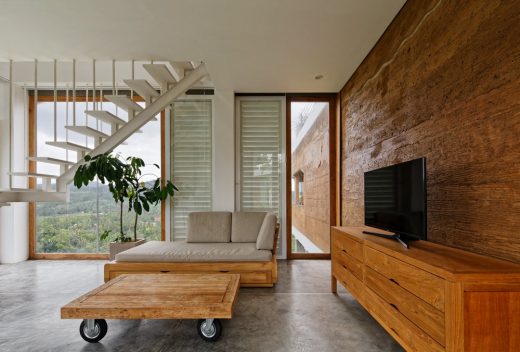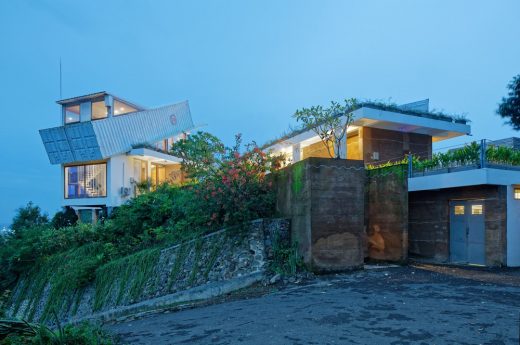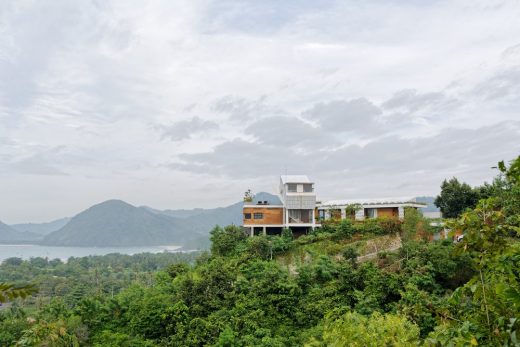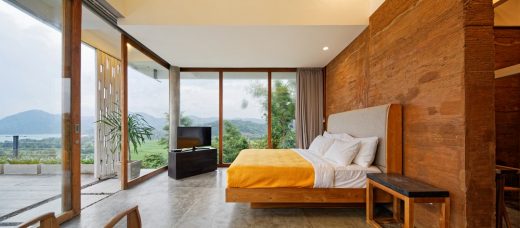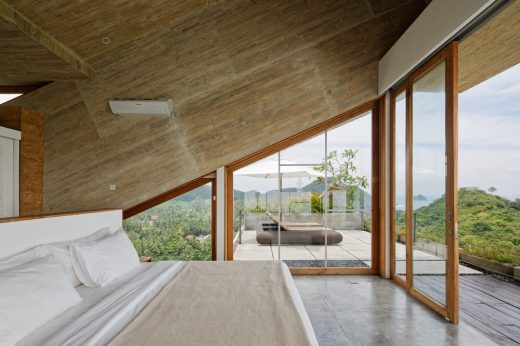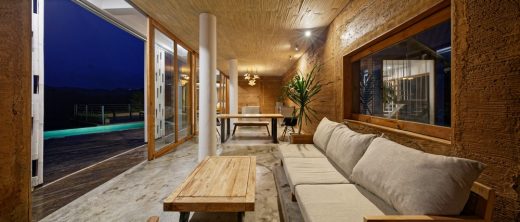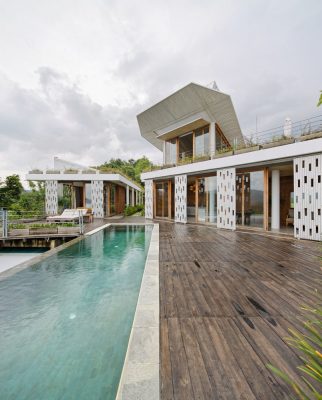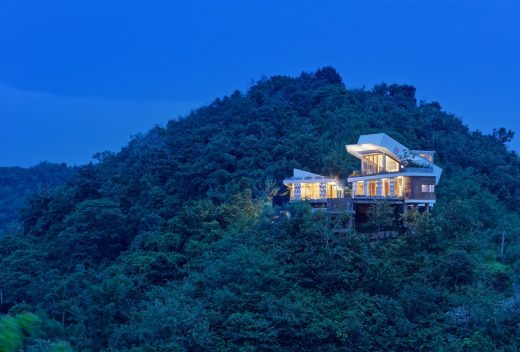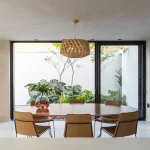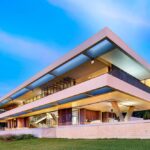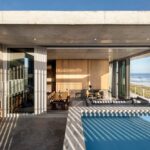Clay House, Lombok Island, Images, Architect, Indonesian Architecture
Clay House on Lombok Island
Home and Pool, Indonesia – design by Budi Pradono Architects
13 Jul 2017
Clay House – Indonesia Property
Design: Budi Pradono Architects
Location: Lombok Island, Indonesia
Clay House on Lombok Island
This house is located in Selong Belanak. Southern part of central Lombok Island in West Nusa Tenggara. It is 30 minutes drive from Lombok International Airport of Praya. The owner named it Seven Heaven Residence.
Understanding the Space of a Place
This site location is on a hill. From which you can see the paddy fields and the vast expanseive of land and sea. When given a task to design this house, the most fundamental question is how to recognize or know the character of a place. The first thing to do is to create a mass composition where the pool is used as the center primary for organizing the quality of public spaces as well as their private space in the composition of the space, Which can simultaneously utilize the entire view on the surrounding buildings. Observations in this location also determines the extent of the building to be constructed. An understanding of the contours, trees and surrounding land will determine the character of this building.
Iconography and Weak Architecture
In the presence of this location on the hill of course Budi Pradono Architects had to be careful because this building will automatically become an icon of the surrounding environment. The architecture is made iconic by its full awareness of the area and by maximising use of local materials. Weak architecture chosen also as a manifestation of the use of local materials with a special processing. For example, the clay material used as main wall material because of this wall 30 cm width can reduce from the sun. Other material is bamboo which also obtained the surrounding areas but use a preservation method that utilizes the surrounding sea. And materials that are widely available container used in opposite island ports.
Material
Concrete:
Using 3 strategies. The first is the foundation structure, all structures using concrete columns. Concrete is used as a piling driven into the mountain as deep as 12-16 meters into the ground to the appropriate hard underground that has been calculated by the surveyor team. This foundation will support concrete floors and columns platform pool so this strategy will reduce the use of the land area.
Recycled container:
The second use of recycled container. Container size limitation of 40 feet have a height and width of 2.2 meters. therefore, the strategy was tilting containers by 60 degrees so will get a higher room. Then to reduce the heat on the inside by internal cladding insulation and is made of bamboo. These containers are also white painted exterior so that it can reflect the silhouette of the sun so it will feel colder inside.
Bamboo:
Bamboo material which is quite affordable and easily obtained from the environment which is not far from the location used optimally. Beginning with the use of bamboo as a supporting structure before building stands out because it is used temporary it does not need to reserved bamboo used to be, while the bamboo used as louvre side, outside the canopy, ceiling on the inside, as well as the internal walls sliding. Bamboo uses a special preservation system first, this bamboo should be harvested at night to prevent photosynthesis. Then preserved by immersion in the sea with sea salt water for 2 months. After drying bamboo is also coated with paint or engineering white washed
Clay:
Approximately 20 km from the site there are craftsmen bricks where they collect clay, the soil has a certain density. The clay was treated with a mixture of sand, cement, straw and cow dung or buffalo dung, which are numerous in that location. This method applies the concept of sustainable architecture which uses materials that are near the local sites. Straw and cow dung will be a strong Viber to bind the clay, the clay walls of the west country, known as ramp earth this will reduce heat more than 50 percent.
Space Organization
Organization of space and mass composition is organized with careful and identity by placing a swimming pool as well datum organizing mass composition space on the left and right as well as the outside. On one side of the left, in zonning as a public area so that the function of this pool overlooking consist of lounge, dining and pantry. While the above is the master bedroom where this place is the most strategic place to see the whole of the surrounding scenery. on the right side of the pool, they invented a bedroom where the bedroom can see all the beauty of nature. while the second bedroom behind getting a private terrace and a sea view to peek underneath the rice fields. This strategy resulted in a similar organization in the distribution of compact well as its natural beauty.
One of the most important and fundamental is where the procession into this site after the run from the bottom to the top, after car parked he could walk down the hall where the peak will get a surprise that the natural beauty of the sea and swimming pool. This process is used as a spatial experience for anyone coming to the place it was.
Photography: Fernando Gomulya
Clay House on Lombok Island images / information received 130717
Location: Selong Belanak, Lombok Island, Indonesia, Southeast Asia
New Indonesian Architecture Designs
Contemporary Architecture in Indonesia
Indonesia Architecture Design : links
Indonesian Houses Selection
House O, Mas, Bali
Design: Alexis Dornier
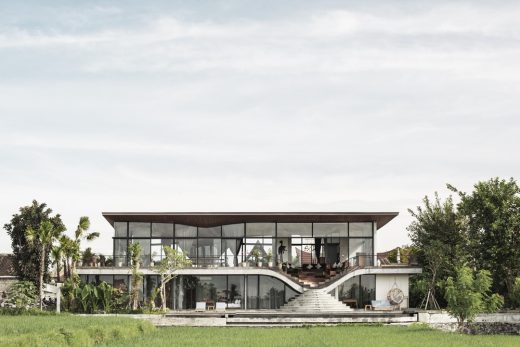
image from architects
House O in Mas Bali
AM Residence, Jakarta, island of Java
Design: Andramatin Architect
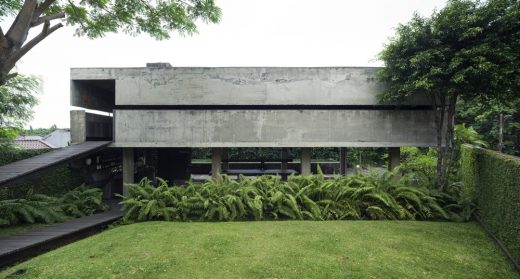
photo © Aga Khan Trust for Culture / Cemal Emden
AM Residence in Jakarta
Melali House, Bali
Design: Thomas Winwood Architecture
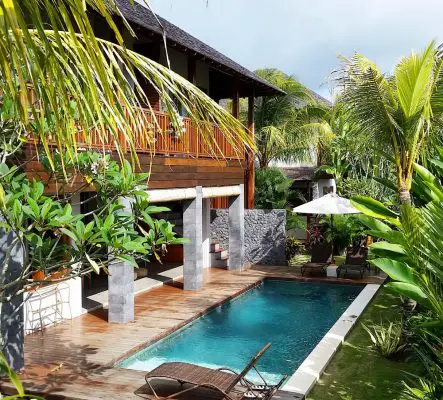
photography : Ryan Robson
Melali House
Comments / photos for the Clay House on Lombok Island page welcome
Website: Budi Pradono Architects

